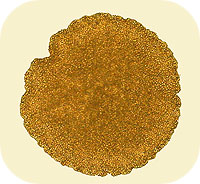Study says; Placozoans closest living ancestor of animals
 According to the latest evidence, the closest living ancestors of animals are large amoeba-shaped, multi- cellular placozoans.
According to the latest evidence, the closest living ancestors of animals are large amoeba-shaped, multi- cellular placozoans.
An entire U-turn has been taken from the old and traditional though that a course from simple to complex was followed by evolution, from sponge to chordates or animals having backbones. Now the latest research suggests that there was a parallel evolution of lower animals like placozoa, corals and jellyfish to higher animals like vertebrates.
Senior author Rob DeSalle, curator at the American Museum of Natural History's Sackler Institute for Comparative Genomics suggested, "To make inferences about the origin of bilaterians - animals with a bilateral symmetry, like humans - earlier studies suggested sponges, ctenophores (comb jellies), or a small, interesting group called placozoa as the most basal or primitive animal."
The latest fidinds have been reported in the journal PloS Biology. The phylogenetic analyses were performed by Schierwater and several other authors from Tierarztliche Hochschule Hannover in Germany (Michael Eitel, Wolfgang Jakob, Hans-Jurgen Osigus, and Heike Hadrys) and Yale University (Stephen Dellaporta) collected data for the analysis.
DeSalle added, "But our new analysis implies that the first major event in animal evolution split bilateral animals from all others, and our work firmly places placozoa as the most primitive of the non-bilaterian animals."
To know what exactly Placozoans are, they are simple animals that do not have a nervous system and possess only four kinds of somatic cells. Since there has never been studies conducted on them in their oceanic home, further information is not available.
In order to collect data, researchers had to refer various sources such as mitochondrial and nuclear DNA sequences and information regarding the morphological structure of RNA molecules to locate over 9,400 uneven characters that hold some information that help biologists suppose the tree of life.
While giving a site on all the animals, scientist now believe that placozoans and their relatives are in a separate ancestry from all other metazoans (starfish, bivalves, anthropoids, crustaceans and chordates).
This suggests that the nervous system that was thought to have developed once must have evolved twice from the DNA that coded for these complex systems.